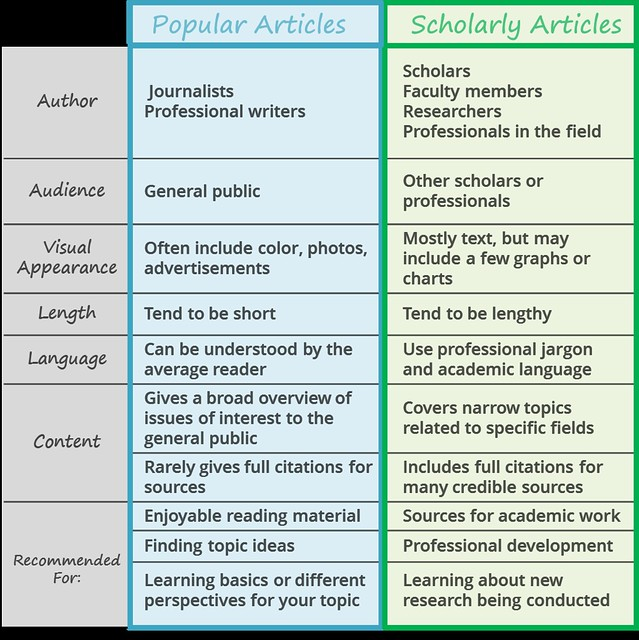2.3: Popular and Scholarly Articles
- Page ID
- 70226
For some of your research assignments, you will be expected to use “scholarly” articles. These may be called “academic” or “journal” articles, or more specifically, “peer reviewed” articles. In a later tutorial we will learn how to focus your searches in order to find these.
For now, it is useful to learn to recognize the difference between these types of publications so that whether you are searching in a library resource or on Google, you will be able to make some judgment about the kind of information source you are looking at and whether it will be appropriate for your assignment.

Trade or professional articles
Depending on your area of study, you may also be asked to consider a third type of publication that is written for professionals and people within a particular field of work. These articles target a specialized audience, may report on primary research but from an applied or summary perspective, and may have advertisements of interest to people in that profession.


